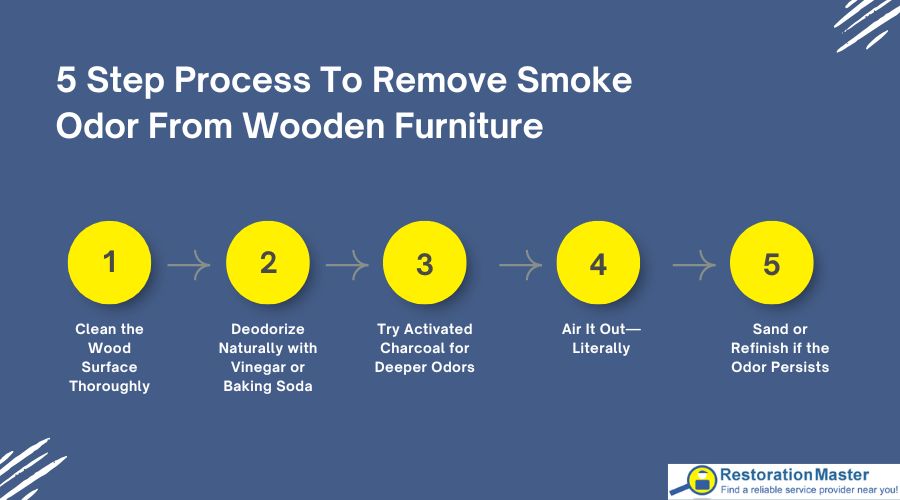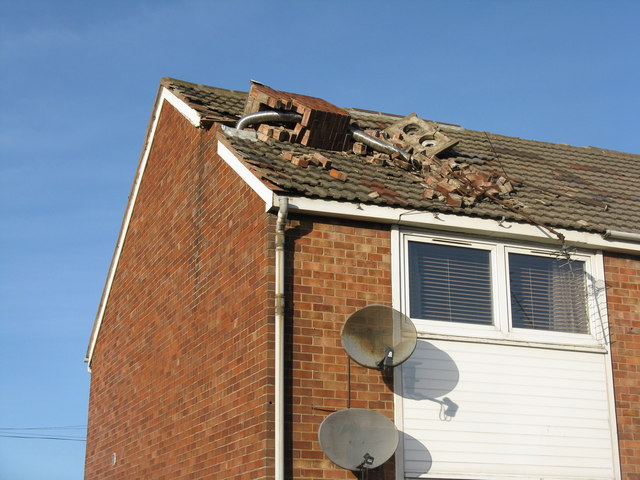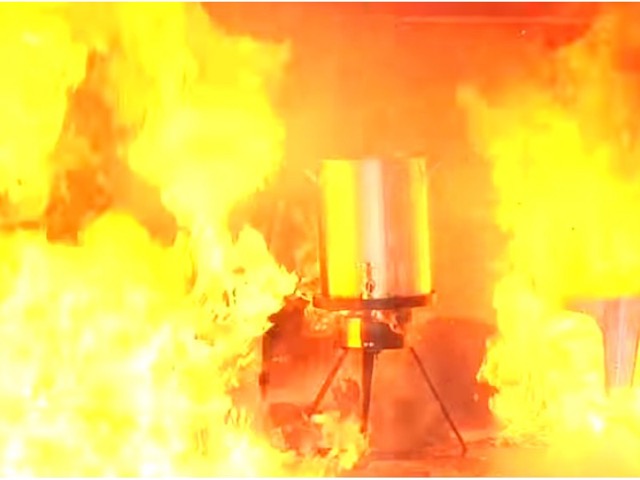How to Remove Smoke Odors from Wood Furniture

There’s something timeless and comforting about well-crafted wood furniture—until it’s tainted by the persistent smell of smoke. Whether you’ve inherited a smoky heirloom, purchased a beautiful vintage piece, or experienced a fire or heavy smoke exposure in your home, you know how hard it is to get rid of that lingering odorAn odor is a smell, often detectable by the human nose, whic... More. But don’t worry—it can be done.
At RestorationMaster, we’ve restored everything from antique oak cabinets to mid-century dressers after fire and smoke exposure. In this guide, we’ll walk you through effective, professional-grade methods for removing smoke odorAn odor is a smell, often detectable by the human nose, whic... More from wood furniture—safely and thoroughly.
Why Does Smoke Odor Stick to Wood?
Wood is a natural material made up of tiny pores and fibers that absorb not only moisture and oils but also microscopic particles—like the tar and sootSoot is fine black particles composed of carbon and other ma... More found in smoke. Over time, those particles settle deep within the wood grain, making it nearly impossible to mask the smell with air fresheners or surface cleaners alone.
Even brief exposure to tobacco smoke or cooking fires can leave a smell that clings for months. Without proper treatment, this odorAn odor is a smell, often detectable by the human nose, whic... More will continue to resurface—especially in humid or enclosed environments. Water damage can also leave behind musty smells and visible stains in the wood, which often persist long after the moisture has dried.
How to Remove Smoke Smell from Wood Furniture
If your wood furniture still smells like smoke after basic cleaning or airing out, don’t worry—there’s a proven process that can help. Below is a straightforward step-by-step guide we recommend, based on what actually works in real-life smoke damage restorationRestoration is the process of returning a property to its pr... More.

Step 1: Clean the Wood Surface Thoroughly
Before you tackle the odorAn odor is a smell, often detectable by the human nose, whic... More itself, it’s important to get rid of any oily residueResidue is any leftover material, such as soot, dust, or che... More, sootSoot is fine black particles composed of carbon and other ma... More, or tar buildup on the surface. Smoke doesn’t just smell—it clings.
What You’ll Need:
- Microfiber cloths
- Mild dish soap or white vinegar
- Warm water
- A soft brush (an old toothbrush works great)
- Gloves
Instructions:
- Mix a few drops of dish soap into warm water, or use a 50/50 mix of vinegar and water.
- Lightly dampen your cloth—don’t soak it—and wipe down the entire piece, inside and out.
- Use a soft brush to clean carved details and tight corners.
- Wipe again with a clean damp cloth to remove any soap or vinegar residueResidue is any leftover material, such as soot, dust, or che... More.
- Dry thoroughly with a soft towel.
Step 2: Deodorize Naturally with Vinegar or Baking Soda
Once the surface is clean, move on to pulling the odorAn odor is a smell, often detectable by the human nose, whic... More out from within the wood fibers. Natural deodorizers like vinegar and baking soda are safe, affordable, and surprisingly effective. Both options are non-toxic, non-damaging, and great for mild to moderate smoke smells.
Option A: White Vinegar
- Pour white vinegar into small open containers.
- Place them inside drawers, cabinets, or directly on the furniture surface.
- Leave for 24 to 48 hours to absorb odorAn odor is a smell, often detectable by the human nose, whic... More molecules from the air and the wood.
Option B: Baking Soda
- Sprinkle baking soda across surfaces and inside compartments.
- Let it sit undisturbed for 1–3 days.
- Vacuum or gently wipe away the powder.
Step 3: Try Activated Charcoal for Deeper Odors
If the smoke odorAn odor is a smell, often detectable by the human nose, whic... More has permeated the wood—such as after a fire or prolonged cigarette exposure—activated charcoal is one of the most effective odorAn odor is a smell, often detectable by the human nose, whic... More removal tools available. Activated charcoal undergoes a high-heat treatment that makes it incredibly porousPorous describes a material that contains small openings or ... More. This allows it to attract and trap odorAn odor is a smell, often detectable by the human nose, whic... More molecules at a microscopic level—rather than maskingMasking is the process of covering or protecting surfaces to... More the smell, it eliminates it.
Here’s how to use it effectively:
- Purchase activated charcoal odorAn odor is a smell, often detectable by the human nose, whic... More absorbers (look for options specifically designed for smoke or home use) from hardware stores or online retailers.
- Place the charcoal packets inside drawers, cabinets, or around the furniture.
- For best results, enclose the piece in a sealed space—such as a small room or under a plastic tarp—to concentrate the deodorizing effect.
- Leave the charcoal in place for at least 2–3 days, allowing it time to draw out and absorb the odorAn odor is a smell, often detectable by the human nose, whic... More particles trapped within the wood.
Step 4: Air It Out—Literally
One of the simplest (and most overlooked) methods is to let nature help.
- On a warm, dry day, place the furniture outside—but in the shade, to avoid UV damage.
- Make sure it’s not humid, which could swell the wood.
- Leave it out for a few hours or more to allow off-gassing.
If outdoor space isn’t available, open windows, run fans, and create strong air circulation indoors with drawers and doors open.
Step 5: Sand or Refinish if the Odor Persists
Still smells after all that? The smoke may have penetrated beyond the finish and into the first few layers of the wood.
Light Sanding:
- Use 220-grit sandpaper to gently remove the top layer of wood.
- Clean off dust, then repeat the vinegar or charcoal method.
Refinishing:
After sanding, apply a new coat of stain, sealant, or shellac to both refresh the look and trap any lingering odors. This step works best on unpainted or lightly finished furniture and can completely restore the look and smell of older pieces.
Professional Smoke Odor Removal Services
If none of the above steps work—or if the furniture was exposed to fire, heavy smoke, or water—it might be time to bring in professional help. Restoration experts have access to advanced methods that can rescue even the most stubborn odors:
- Thermal fogging: Sends deodorizing vaporVapor is the gaseous form of a substance that is typically l... More deep into wood grain.
- Ozone treatment: Uses ozone gas to neutralize smoke molecules.
- Odor-sealing primers: Applied post-cleaning to lock in any remaining odorAn odor is a smell, often detectable by the human nose, whic... More.
These methods are often used in home fire restorationRestoration is the process of returning a property to its pr... More projects and can help preserve the value of antique or sentimental items.
Have you experienced a fire at your home or business and need to get the smoke odors removed? RestorationMaster is here to help. No matter what caused the damage, our highly trained technicians will arrive quickly to clean, disinfect, deodorize, and fully restore your property. Call us for all of your fire damage and deodorization needs.












